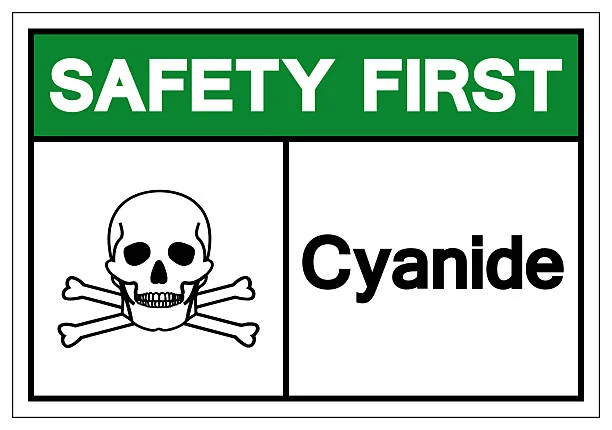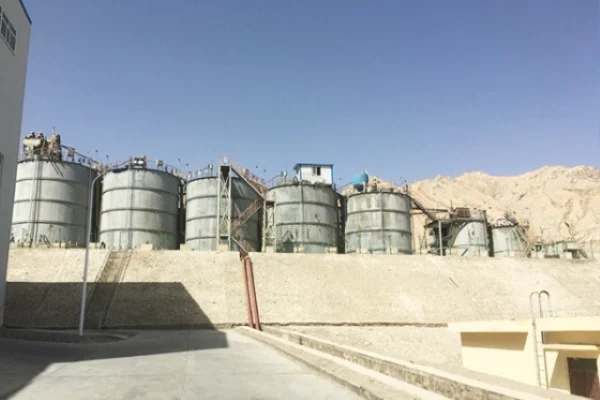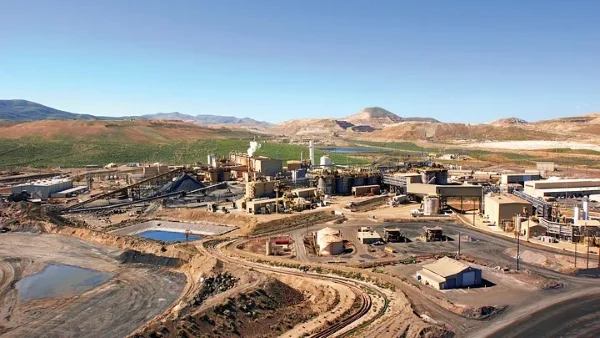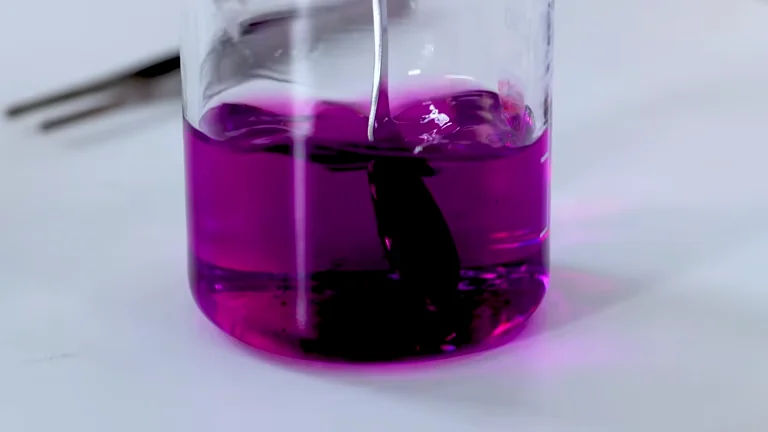
1. Introduction
In the field of metallurgy, especially in gold extraction and sulfide ore processing, the presence of Cyanide on the surface of Sulfide Ores poses significant challenges. Cyanide is widely used in the cyanidation leaching process for gold extraction due to its ability to form complexes with gold, facilitating its dissolution. However, after the leaching process, the remaining cyanide on the surface of sulfide ores in the tailings not only leads to environmental pollution but also inhibits the subsequent beneficiation of sulfide minerals, reducing the overall recovery rate of valuable metals. Therefore, developing effective methods to remove cyanide on the surface of sulfide ores is crucial for sustainable mineral processing and environmental protection.
2. Existing Problems with Cyanide on Sulfide Ore Surfaces
2.1 Environmental Impact
Cyanide is a highly toxic substance. When sulfide ores with surface - adsorbed cyanide are discharged into the environment, cyanide can gradually leach out and contaminate soil, water sources, and air. Even in low concentrations, cyanide can be extremely harmful to aquatic organisms, plants, and human health. For example, in some mining areas where improper disposal of cyanide - containing tailings has occurred, nearby water bodies have shown a significant decrease in dissolved oxygen content, resulting in the death of fish and other aquatic life.
2.2 Inhibition of Sulfide Mineral Beneficiation
The cyanide adsorbed on the surface of sulfide ores, such as pyrite, chalcopyrite, and sphalerite, can form a passivation film on the mineral surface. This film reduces the reactivity of sulfide minerals during subsequent flotation or other beneficiation processes. For instance, in the flotation of copper - bearing sulfide ores, the presence of cyanide on the surface of chalcopyrite can weaken its interaction with collectors, making it difficult to separate copper minerals from gangue minerals effectively, thereby reducing the grade and recovery rate of copper concentrates.
3. Methods for Removing Cyanide on the Surface of Sulfide Ores
3.1 Acid Activation Method
3.1.1 Principle
The acid activation method mainly uses acids like sulfuric acid or oxalic acid to react with the cyanide - containing compounds on the surface of sulfide ores. When an acid is added, it causes the decomposition of cyanide - metal complexes. As a result, hydrogen cyanide gas is generated. But in a well - designed process, this volatile hydrogen cyanide can be recovered and reused through appropriate absorption systems.
3.1.2 Process Steps
Ore Pulp Preparation: First, mix the sulfide ore tailings with surface - adsorbed cyanide with water to create a uniform ore pulp. The solid - liquid ratio of the ore pulp is typically adjusted based on the ore's characteristics and specific process requirements, usually within the range of 1:2 - 1:5.
Acid Addition: Slowly add sulfuric acid or oxalic acid to the ore pulp while stirring continuously. The amount of acid added must be carefully controlled according to the cyanide content in the ore pulp. Usually, the pH value of the ore pulp is adjusted to 2 - 4. and the pH should be monitored in real - time using a pH meter during the addition process.
Reaction and Gas Treatment: After adding the acid, let the reaction proceed for about 1 - 3 hours. During this time, hydrogen cyanide gas is produced. To prevent this gas from polluting the environment, a gas - collection and - treatment system is set up. The generated hydrogen cyanide gas is directed into an absorption tower filled with an alkaline solution, such as sodium hydroxide solution. Here, the hydrogen cyanide reacts with the sodium hydroxide, and the recovered Sodium Cyanide solution can be recycled to the cyanidation process if its quality meets the requirements.
3.1.3 Advantages and Disadvantages
Advantages: This method is relatively straightforward in both principle and operation. It can effectively break down cyanide - containing compounds on the surface of sulfide ores and has the potential to recycle cyanide, reducing the overall cost of cyanide use in the mining process.
Disadvantages: There are significant safety risks involved. Hydrogen cyanide gas is highly toxic, and any leakage during the reaction can pose serious harm to operators and the environment. Additionally, the acids used in this method are corrosive, which can damage equipment and pipelines, increasing maintenance costs and shortening the equipment's lifespan.
3.2 Oxidant Activation Method
3.2.1 Principle
Oxidants such as hydrogen peroxide, potassium permanganate, and ozone are employed to oxidize the cyanide on the surface of sulfide ores. These oxidants break the chemical bonds of cyanide compounds, transforming cyanide into relatively non - toxic substances like nitrogen gas and carbonates.
3.2.2 Process Steps
Ore Pulp Preparation: Similar to the acid activation method, prepare the sulfide ore tailings into an ore pulp with an appropriate solid - liquid ratio.
Oxidant Addition: Add the chosen oxidant to the ore pulp. The amount of oxidant added depends on the cyanide content in the ore pulp and the oxidant's oxidation potential. For example, when using hydrogen peroxide, the dosage is generally 1 - 5 kg per ton of ore pulp, while potassium permanganate is usually added at 0.5 - 2 kg per ton of ore pulp. The addition should be done slowly with continuous stirring to ensure even mixing.
Reaction and Monitoring: Allow the oxidant to react with the cyanide in the ore pulp for 2 - 4 hours. During the reaction, monitor the oxidation - reduction potential and cyanide content in the ore pulp. The oxidation - reduction potential value can reflect the progress of the oxidation reaction. When the value stabilizes and the cyanide content in the ore pulp meets the required standard (usually less than 0.5 mg/L), the reaction is considered complete.
3.2.3 Advantages and Disadvantages
Advantages: This method doesn't produce toxic and volatile gases like the acid activation method, making it safer for the operation environment. It can effectively oxidize and decompose cyanide, achieving the goal of removing cyanide from the surface of sulfide ores. Moreover, the reaction products are relatively environmentally friendly.
Disadvantages: The cost of oxidants is relatively high, especially for strong oxidants like ozone, which increases the processing cost of sulfide ores. Additionally, the oxidation reaction is easily influenced by factors such as the ore pulp's pH value, temperature, and the presence of other impurities, requiring strict control of reaction conditions.
3.3 Copper Salt Method
3.3.1 Principle
Copper salts, such as copper sulfate, are added to the sulfide ore pulp with surface - adsorbed cyanide. The copper ions react with cyanide to form insoluble copper - cyanide complexes. These complexes can then be separated from the ore pulp through solid - liquid separation methods, thus achieving the removal of cyanide.
3.3.2 Process Steps
Ore Pulp Preparation: Prepare the sulfide ore tailings into an ore pulp with a suitable solid - liquid ratio.
Copper Salt Addition: Add an appropriate amount of copper sulfate to the ore pulp. The quantity of copper sulfate added is determined by the cyanide content in the ore pulp, generally with a molar ratio of copper ions to cyanide ions of 1 - 2:1. Copper sulfate is usually added as an aqueous solution, and the addition process should be accompanied by continuous stirring to ensure the even distribution of copper ions in the ore pulp.
Reaction and Solid - Liquid Separation: After adding the copper salt, let the reaction proceed for 1 - 2 hours. Then, carry out solid - liquid separation on the ore pulp using methods such as filtration or sedimentation. The separated solid contains copper - cyanide precipitates and sulfide minerals, while the separated liquid can be further treated to meet the discharge standard or recycled for other purposes.
3.3.3 Advantages and Disadvantages
Advantages: This method can effectively remove cyanide from the surface of sulfide ores by forming insoluble precipitates. The operation process is relatively simple, and copper sulfate is a common and inexpensive chemical reagent, offering certain economic benefits.
Disadvantages: Adding copper salts may introduce copper impurities into the ore pulp, which can affect the subsequent beneficiation of sulfide minerals. For example, in the flotation of lead - zinc sulfide ores, excessive copper ions may activate sphalerite, interfering with the separation of lead and zinc minerals. Additionally, the separated copper - cyanide precipitates need to be properly disposed of to prevent secondary pollution.
3.4 New Composite Reagent Method
3.4.1 Principle
Some newly developed composite reagents, like a combination of polysulfides and sodium metabisulfite, are used. The polysulfides react with the sulfur - containing components in the cyanide - containing compounds on the surface of sulfide ores, while sodium metabisulfite adjusts the redox potential of the system and promotes the decomposition of cyanide, thus facilitating its removal.
3.4.2 Process Steps
Ore Pulp Preparation: Prepare the sulfide ore tailings into an ore pulp.
Composite Reagent Addition: Add the composite reagent consisting of polysulfides and sodium metabisulfite to the ore pulp. The weight ratio of polysulfides to sodium metabisulfite is typically 1:1. and the amount of the composite reagent added is determined based on the cyanide content in the ore pulp and the nature of the sulfide ore, generally ranging from 0.5 - 2 kg per ton of ore pulp.
Reaction and Monitoring: After adding the composite reagent, let the reaction proceed for 1 - 3 hours. During the reaction, monitor the cyanide content and relevant chemical parameters, such as redox potential and pH value, in the ore pulp. Adjust the reaction conditions promptly according to the monitoring results to ensure the complete removal of cyanide.
3.4.3 Advantages and Disadvantages
Advantages: This method shows good adaptability to different types of sulfide ores. The composite reagent works synergistically to effectively remove cyanide from the surface of sulfide ores. Compared with single - reagent methods, it may offer better removal efficiency and have less impact on the subsequent beneficiation of sulfide minerals.
Disadvantages: The development and production of composite reagents are relatively complex, and the cost may be higher than some traditional single - reagent methods. Moreover, the specific reaction mechanism of composite reagents is not yet fully understood, which may introduce uncertainties in actual industrial applications.
4. Process Optimization and Considerations
4.1 Pretreatment of Ores
Before using any of the above methods to remove cyanide on the surface of sulfide ores, appropriate ore pretreatment is often necessary. For example, if the sulfide ore tailings contain a large amount of fine - grained gangue minerals, pre - screening or classification operations can be carried out to remove the hard - to - treat fine - grained fractions. This can enhance the contact efficiency between the reagent and the sulfide minerals with surface - adsorbed cyanide and reduce the interference of gangue minerals on the reaction process.
4.2 Reaction Conditions Control
pH Value: The pH value of the ore pulp significantly impacts the reaction process. The acid activation method requires a lower pH to promote the decomposition of cyanide - containing compounds, while the oxidant activation method and the copper salt method need to maintain an appropriate pH range. For example, when using hydrogen peroxide as an oxidant, the optimal pH value of the ore pulp is usually 8 - 10. and when using copper sulfate, the pH value of the ore pulp is generally controlled at 6 - 8.
Temperature: The reaction temperature also affects the reaction rate and efficiency. Generally, increasing the temperature can speed up the reaction rate. However, for some reactions, such as the oxidation of cyanide by hydrogen peroxide, an overly high temperature may cause the oxidant to decompose, reducing the oxidation efficiency. Therefore, the reaction temperature needs to be optimized according to the specific reaction system, usually within the range of 20 - 40 °C.
Stirring Intensity: Sufficient stirring is essential to ensure the even distribution of reagents in the ore pulp and increase the contact probability between the reagent and the cyanide - containing substances on the surface of sulfide ores. However, excessive stirring may lead to unnecessary energy consumption and mechanical wear of equipment. The appropriate stirring intensity should be determined through experimental research and practical production experience.
4.3 Solid - Liquid Separation and Wastewater Treatment
After the reaction to remove cyanide on the surface of sulfide ores, efficient solid - liquid separation is required to separate the treated sulfide minerals from the reaction solution. Commonly used solid - liquid separation methods include filtration, sedimentation, and centrifugation. The separated wastewater usually still contains some residual cyanide and other impurities, which need to be further treated to meet the discharge standard. Wastewater treatment processes can include methods such as further oxidation, adsorption, and biological treatment.
5. Case Studies
5.1 Acid Activation Method Application in a Gold Mine
In a certain gold mine, after the cyanidation leaching process, the sulfide ore tailings had a certain amount of surface - adsorbed cyanide. The mine used the acid activation method for treatment. First, the tailings were made into an ore pulp with a solid - liquid ratio of 1:3. Then, sulfuric acid was added to adjust the ore pulp's pH value to 3. After reacting for 2 hours, the generated hydrogen cyanide gas was collected and absorbed by a sodium hydroxide solution. After treatment, the cyanide content in the ore pulp dropped from 5 mg/L to less than 0.5 mg/L, and the subsequent flotation recovery rate of sulfide minerals increased by about 10%. However, during the operation, hydrogen cyanide gas leakage posed safety risks at the operation site, and the equipment pipelines suffered relatively severe corrosion.
5.2 Oxidant Activation Method in a Polymetallic Sulfide Ore Mine
A polymetallic sulfide ore mine used hydrogen peroxide as an oxidant to remove cyanide on the surface of sulfide ores. The ore pulp's pH value was first adjusted to 9. and then hydrogen peroxide was added at a dosage of 3 kg per ton of ore pulp. After reacting for 3 hours, the cyanide content in the ore pulp was reduced to a very low level. The subsequent beneficiation of copper, lead, and zinc sulfide minerals was not affected by the remaining cyanide, and the overall metal recovery rate improved. However, the high cost of hydrogen peroxide led to an increase in the ore processing cost by about $5 per ton.
6. Conclusion
Removing cyanide on the surface of sulfide ores is a crucial task in the field of mineral processing. The acid activation method, oxidant activation method, copper salt method, and new composite reagent method each have their own advantages and disadvantages. In actual industrial applications, it is necessary to comprehensively consider factors such as the nature of sulfide ores, environmental protection requirements, and economic costs to select the most suitable method. Meanwhile, by optimizing process conditions, pretreating ores, and properly handling solid - liquid separation and wastewater treatment, the efficiency of removing cyanide on the surface of sulfide ores can be further enhanced, achieving the goals of resource recovery and environmental protection.
- Random Content
- Hot content
- Hot review content
- Flexible Customer and Supplier Relations Specialist:Location: Laos
- Seismic Electric Detonator(Anti static,Water Resistance)
- Cobalt Sulphate Heptahydrate
- 97% 2-Hydroxypropyl methacrylate
- Diethylene Glycol
- Industrial Sodium Nitrite 98.5%
- Ethylene carbonate
- 1Discounted Sodium Cyanide (CAS: 143-33-9) for Mining - High Quality & Competitive Pricing
- 2China's New Regulations on Sodium Cyanide Exports and Guidance for International Buyers
- 3Sodium Cyanide 98% CAS 143-33-9 gold dressing agent Essential for Mining and Chemical Industries
- 4International Cyanide(Sodium cyanide) Management Code - Gold Mine Acceptance Standards
- 5China factory Sulfuric Acid 98%
- 6Anhydrous Oxalic acid 99.6% Industrial Grade
- 7Oxalic acid for mining 99.6%
- 1Sodium Cyanide 98% CAS 143-33-9 gold dressing agent Essential for Mining and Chemical Industries
- 2High Quality 99% Purity of Cyanuric chloride ISO 9001:2005 REACH Verified Producer
- 3Zinc chloride ZnCl2 for High Molecular Weight Polymers Initiator
- 4High Purity · Stable Performance · Higher Recovery — sodium cyanide for modern gold leaching
- 5High Quality Sodium Ferrocyanide / Sodium Hexacyanoferr
- 6Gold Ore Dressing Agent Safe Gold Extracting Agent Replace Sodium Cyanide
- 7Sodium Cyanide 98%+ CAS 143-33-9











Online message consultation
Add comment: